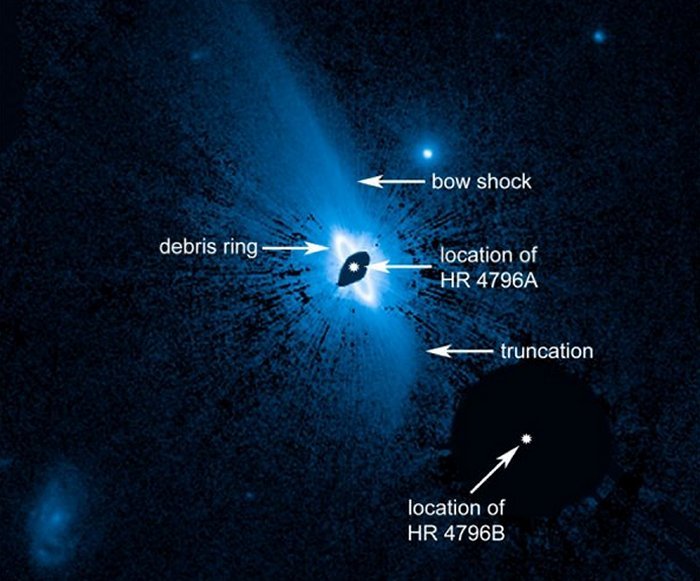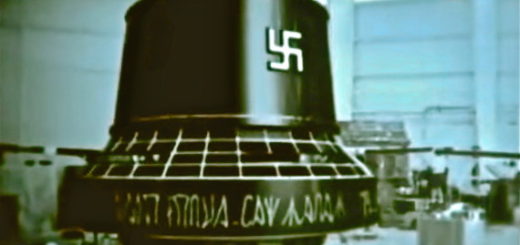Star HR 4796A Encircled By Vast, Complex Dust Structure About 150 Billion Miles Across

Astronomers have used NASA’s Hubble Space Telescope to uncover a vast, complex dust structure, about 150 billion miles across, enveloping the young star HR 4796A.
A bright, narrow, inner ring of dust is already known to encircle the star and may have been corralled by the gravitational pull of an unseen giant planet. This newly discovered huge structure around the system may have implications for what this yet-unseen planetary system looks like around the 8-million-year-old star, which is in its formative years of planet construction.
The debris field of very fine dust was likely created from collisions among developing infant planets near the star, evidenced by a bright ring of dusty debris seen 7 billion miles from the star. The pressure of starlight from the star, which is 23 times more luminous than the Sun, then expelled the dust far into space.
“The dust distribution is a telltale sign of how dynamically interactive the inner system containing the ring is,” said Glenn Schneider of the University of Arizona, Tucson, who used Hubble’s Space Telescope Imaging Spectrograph (STIS) to probe and map the small dust particles in the outer reaches of the HR 4796A system, a survey that only Hubble’s sensitivity can accomplish.
“We cannot treat exoplanetary debris systems as simply being in isolation. Environmental effects, such as interactions with the interstellar medium and forces due to stellar companions, may have long-term implications for the evolution of such systems. The gross asymmetries of the outer dust field are telling us there are a lot of forces in play (beyond just host-star radiation pressure) that are moving the material around. We’ve seen effects like this in a few other systems, but here’s a case where we see a bunch of things going on at once,” Schneider further explained.
But the puffy outer dust structure has much more to offer. It is like a donut-shaped inner tube that got hit by a truck. It is also much more extended in one direction than in the other and so looks squashed on one side even after accounting for its inclined projection on the sky.
This may be due to the motion of the host star plowing through the interstellar medium, like the bow wave from a boat crossing a lake. Or it may be influenced by a tidal tug from the star’s red dwarf binary companion (HR 4796B), located at least 54 billion miles from the primary star.
Original story



 Creators of mankind
Creators of mankind Description of “Tall white aliens”
Description of “Tall white aliens” Where they came from?
Where they came from? About hostile civilizations
About hostile civilizations The war for the Earth
The war for the Earth “Tall white aliens” about eternal life
“Tall white aliens” about eternal life Video: “Nordic aliens”
Video: “Nordic aliens” Aliens
Aliens Alien encounters
Alien encounters The aliens base
The aliens base UFO
UFO Technology UFO
Technology UFO Underground civilization
Underground civilization Ancient alien artifacts
Ancient alien artifacts Military and UFO
Military and UFO Mysteries and hypotheses
Mysteries and hypotheses Scientific facts
Scientific facts


















